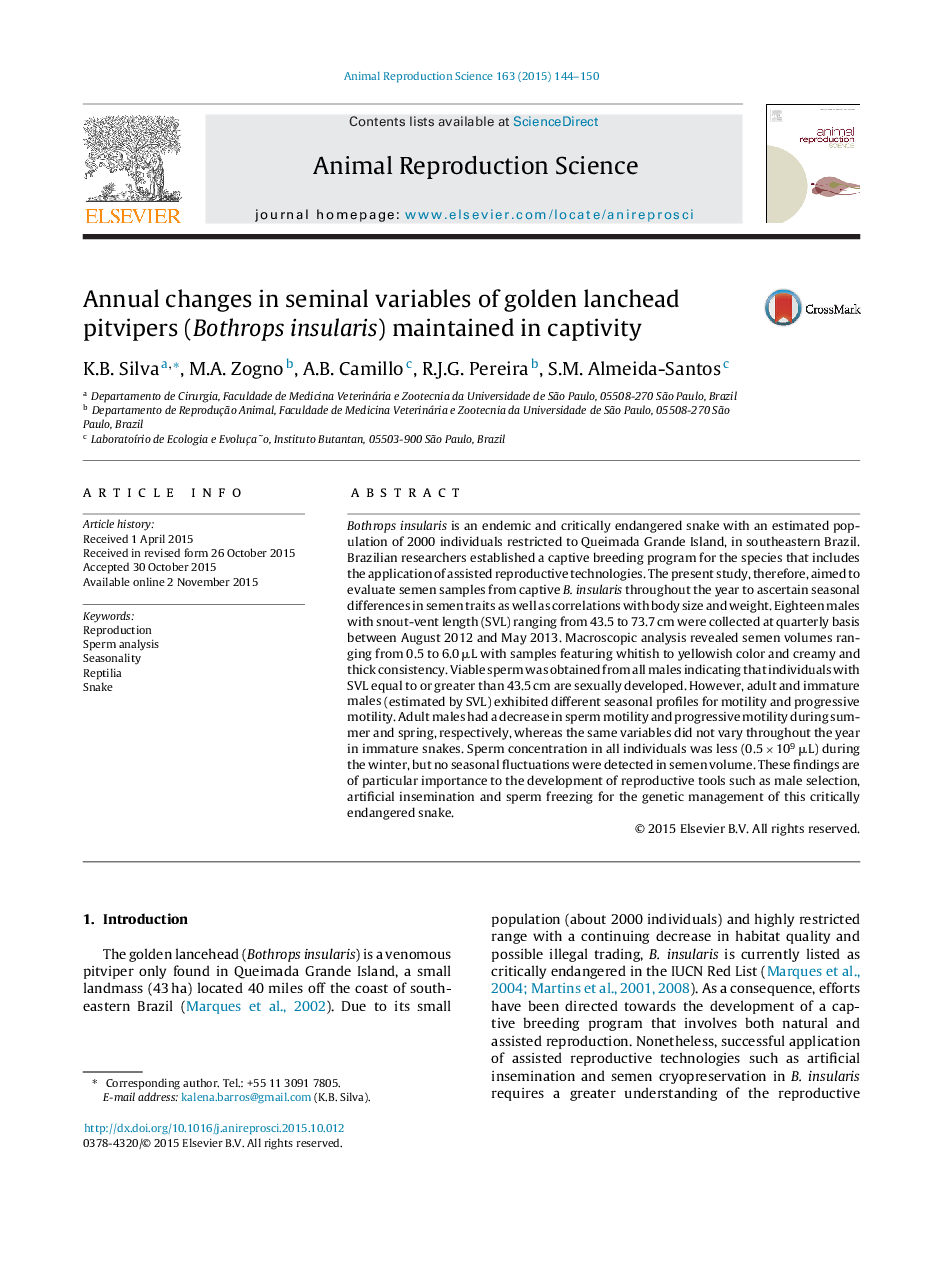| Article ID | Journal | Published Year | Pages | File Type |
|---|---|---|---|---|
| 8404310 | Animal Reproduction Science | 2015 | 7 Pages |
Abstract
Bothrops insularis is an endemic and critically endangered snake with an estimated population of 2000 individuals restricted to Queimada Grande Island, in southeastern Brazil. Brazilian researchers established a captive breeding program for the species that includes the application of assisted reproductive technologies. The present study, therefore, aimed to evaluate semen samples from captive B. insularis throughout the year to ascertain seasonal differences in semen traits as well as correlations with body size and weight. Eighteen males with snout-vent length (SVL) ranging from 43.5 to 73.7 cm were collected at quarterly basis between August 2012 and May 2013. Macroscopic analysis revealed semen volumes ranging from 0.5 to 6.0 μL with samples featuring whitish to yellowish color and creamy and thick consistency. Viable sperm was obtained from all males indicating that individuals with SVL equal to or greater than 43.5 cm are sexually developed. However, adult and immature males (estimated by SVL) exhibited different seasonal profiles for motility and progressive motility. Adult males had a decrease in sperm motility and progressive motility during summer and spring, respectively, whereas the same variables did not vary throughout the year in immature snakes. Sperm concentration in all individuals was less (0.5 Ã 109 μL) during the winter, but no seasonal fluctuations were detected in semen volume. These findings are of particular importance to the development of reproductive tools such as male selection, artificial insemination and sperm freezing for the genetic management of this critically endangered snake.
Related Topics
Life Sciences
Agricultural and Biological Sciences
Animal Science and Zoology
Authors
K.B. Silva, M.A. Zogno, A.B. Camillo, R.J.G. Pereira, S.M. Almeida-Santos,
